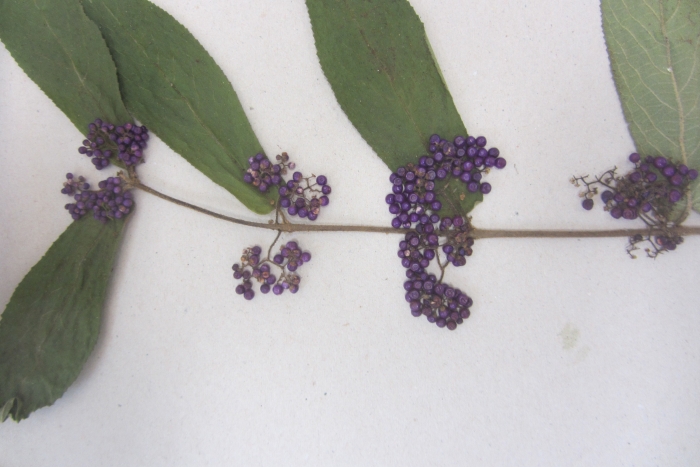Rubella Beautyberry
(Callicarpa rubella)
Rubella Beautyberry (Callicarpa rubella)
/
/

Wilcox, Mike
CC BY 4.0
Image By:
Wilcox, Mike
Recorded By:
Copyright:
CC BY 4.0
Copyright Notice:
Photo by: Wilcox, Mike | License Type: CC BY 4.0 | License URL: https://creativecommons.org/licenses/by/4.0 | Uploader: Fæ | Publisher: Wikimedia Commons | Title: Callicarpa_rubella_Lindl._(AM_AK361278-3).jpg | Notes: User created page with UploadWizard |



























Estimated Native Range
Summary
Callicarpa rubella, commonly known as Rubella Beautyberry, is a deciduous shrub native to the understory of humid and semi-shaded forested areas, as well as forest edges and clearings in Southeast Asia. It typically grows to a height of 3-10 feet (0.9-3 meters) and a width of 3-6 feet (0.9-1.8 meters). The plant has a bushy habit with arching branches, and its leaves turn yellow to red in the fall, adding to its ornamental value. The small, pink to violet flowers bloom in summer and are followed by clusters of vibrant purple to magenta berries that persist into winter, providing a striking contrast against the foliage and attracting birds and other wildlife.
Rubella Beautyberry is valued for its year-round visual interest, particularly the showy berries that can enliven a winter garden. It is used in landscape design for mass plantings, as a specimen plant, or for naturalistic gardens. This shrub thrives in full sun to part shade and prefers moist, well-drained soils rich in organic matter. It is relatively low maintenance but benefits from pruning to encourage bushier growth and more prolific fruiting. While generally pest-free, it can occasionally suffer from leaf spot diseases.CC BY-SA 4.0
Rubella Beautyberry is valued for its year-round visual interest, particularly the showy berries that can enliven a winter garden. It is used in landscape design for mass plantings, as a specimen plant, or for naturalistic gardens. This shrub thrives in full sun to part shade and prefers moist, well-drained soils rich in organic matter. It is relatively low maintenance but benefits from pruning to encourage bushier growth and more prolific fruiting. While generally pest-free, it can occasionally suffer from leaf spot diseases.CC BY-SA 4.0
Plant Description
- Plant Type: Shrub
- Height: 3-10 feet
- Width: 3-6 feet
- Growth Rate: Moderate
- Flower Color: Pink
- Flowering Season: Summer, Fall
- Leaf Retention: Deciduous
Growth Requirements
- Sun: Full Sun, Part Shade
- Water: Medium
- Drainage: Medium
Common Uses
Bee Garden, Butterfly Garden, Deer Resistant, Fragrant, Groundcover, Low Maintenance
Natural Habitat
native to the understory of humid and semi-shaded forested areas, as well as forest edges and clearings in Southeast Asia
Other Names
Common Names: Hong Zi Zhu
Scientific Names: , Callicarpa rubella, Callicarpa rubella f. angustata, Callicarpa rubella var. rubella, Callicarpa rubella var. subglabra, Callicarpa rubella var. hemsleyana, Callicarpa dielsii, Callicarpa rubella f. crenata, Callicarpa panduriformis, Callicarpa rubella f. subglabra
GBIF Accepted Name: Callicarpa rubella Lindl.